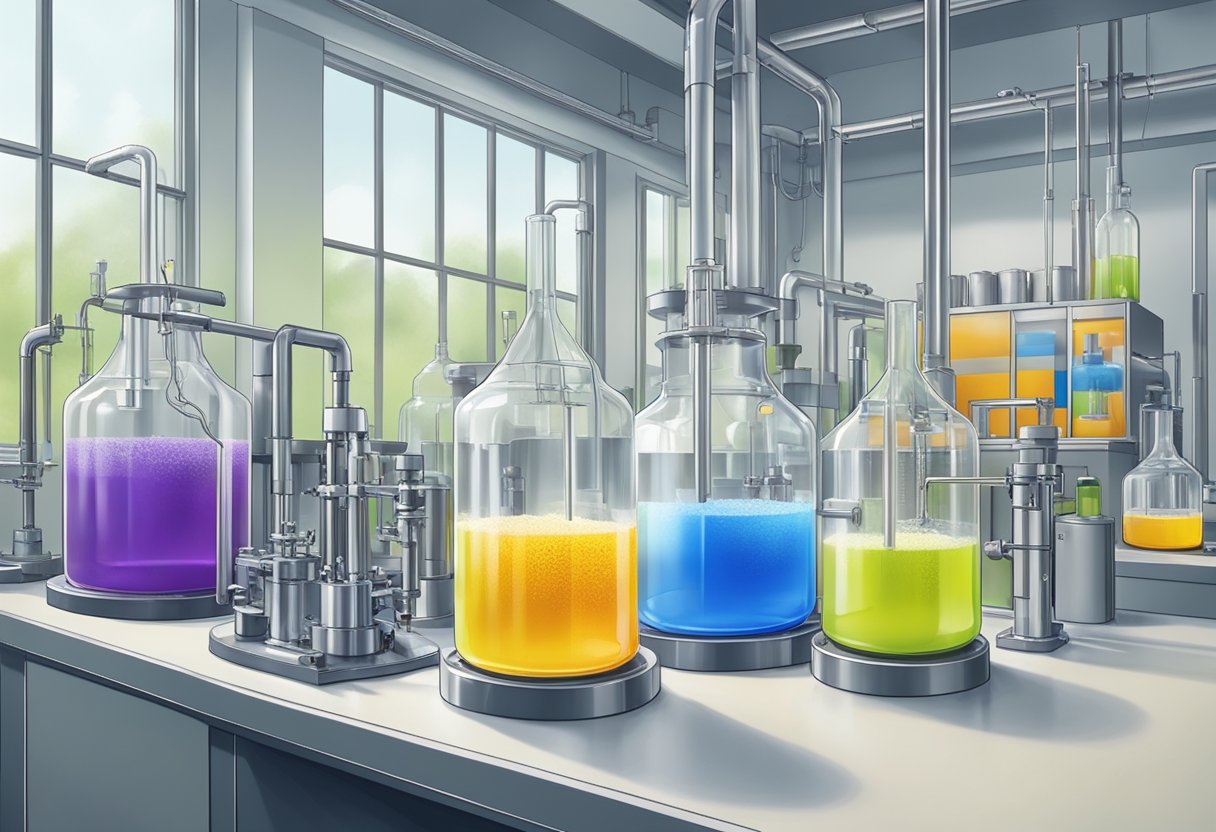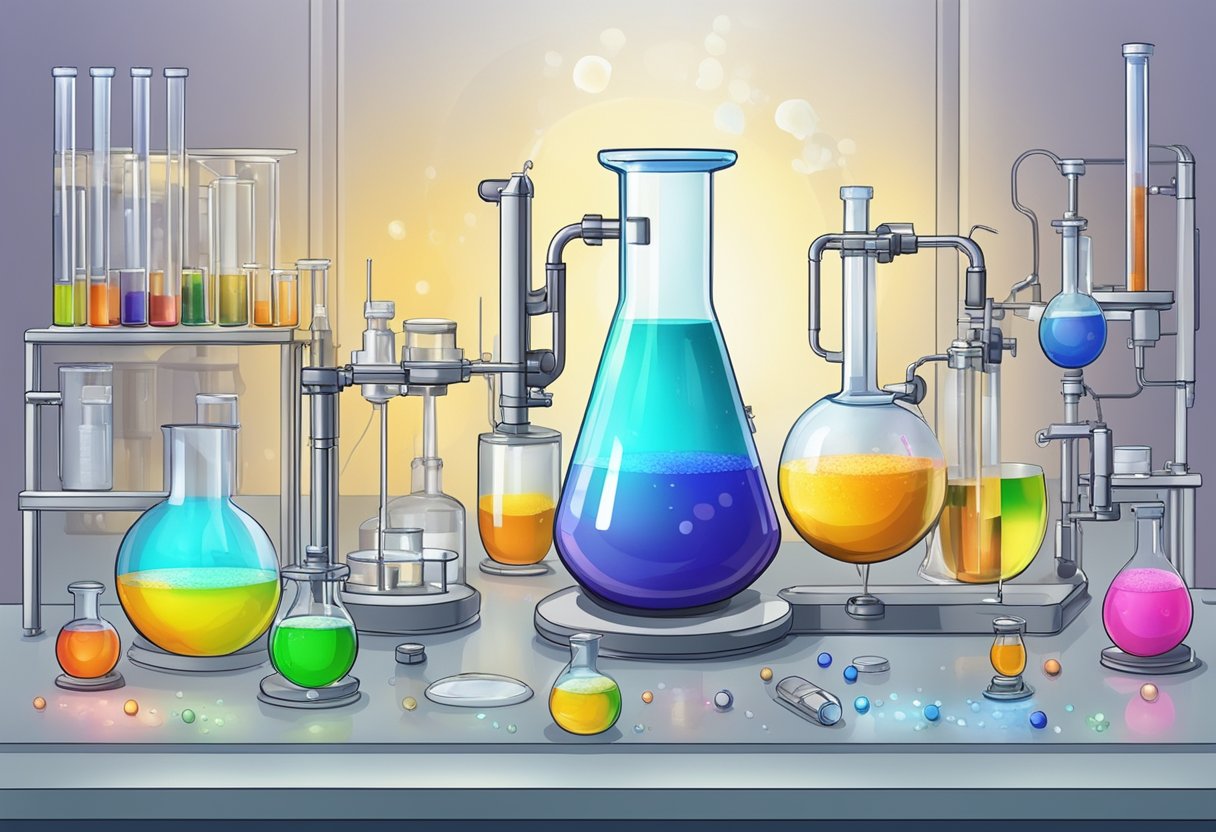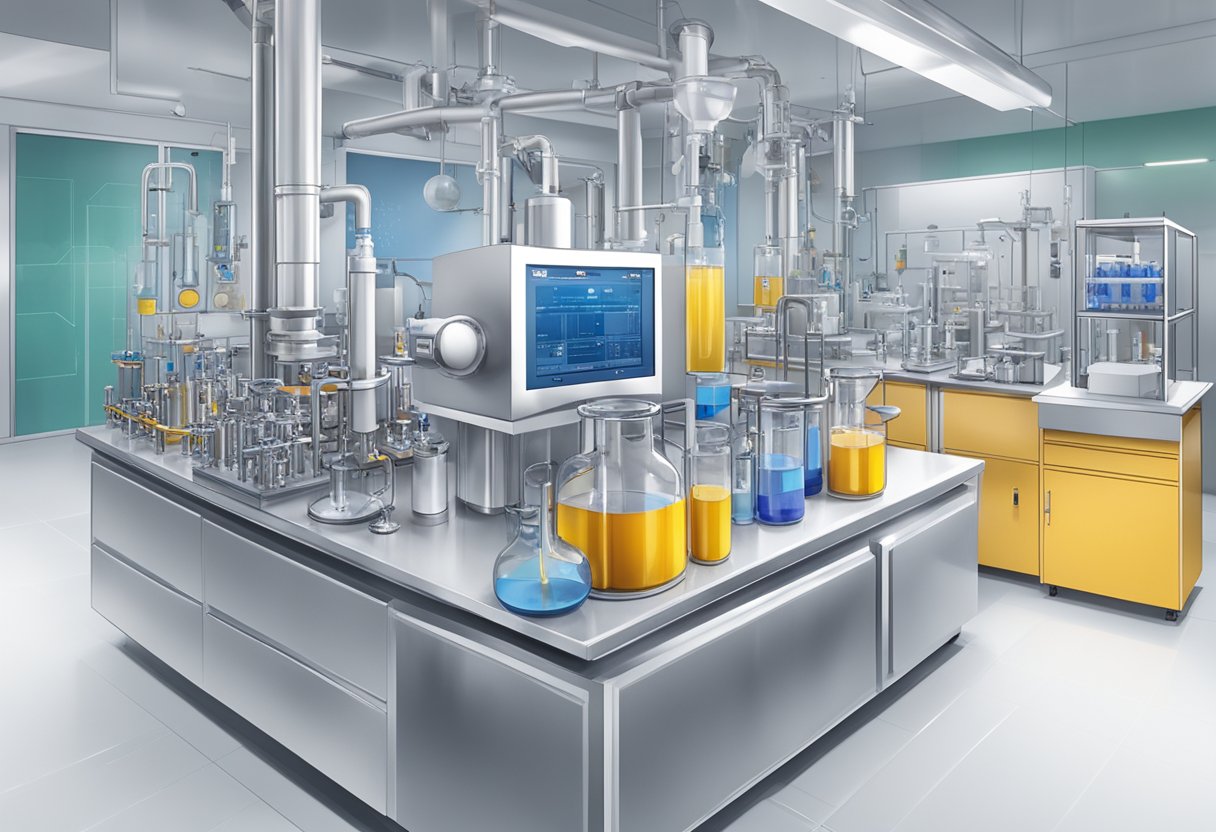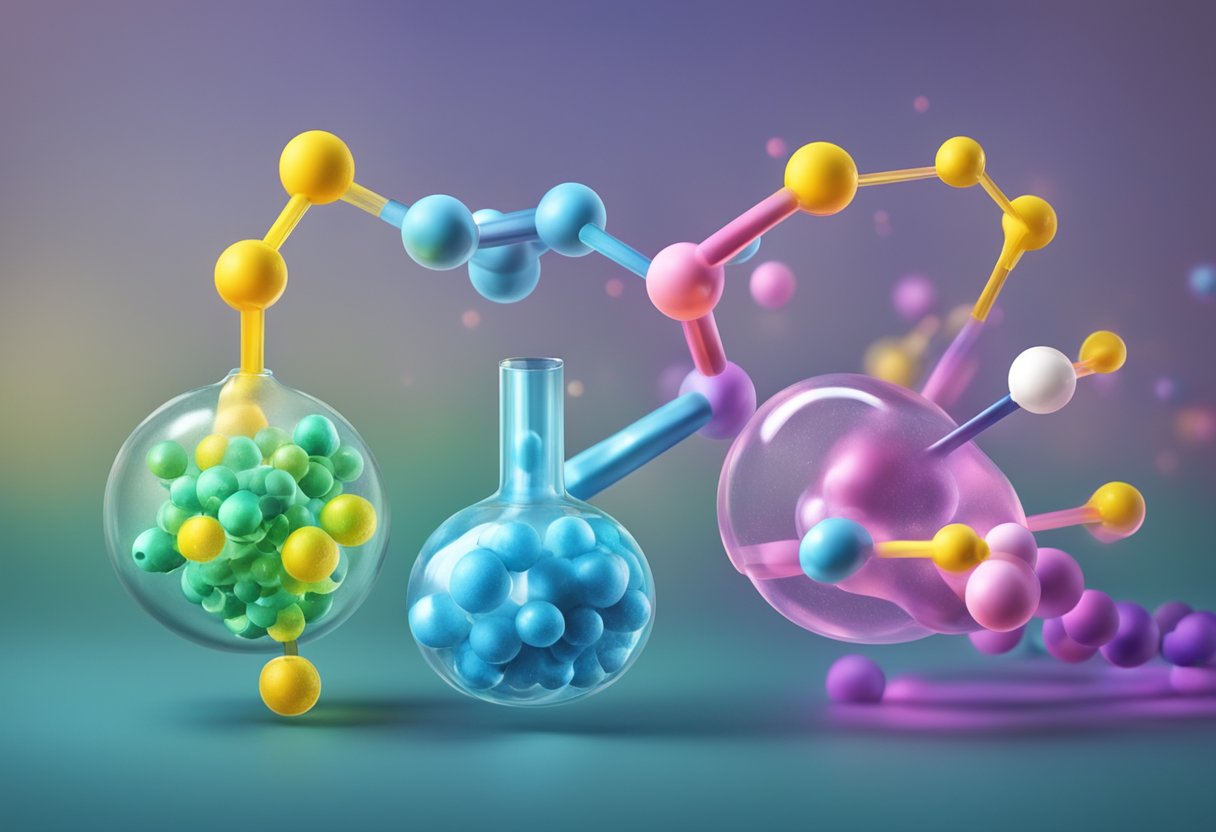Sulfenamide Accelerators: Understanding Its Role in Rubber Industry
19/01/2024
Sulfenamide accelerators are a type of rubber vulcanization accelerator that has gained significant attention in recent years. These accelerators are commonly used in the production of tires, rubber hoses, and other rubber products due to their ability to improve the mechanical properties of rubber compounds.

Sulfenamide accelerators are known for their ability to provide fast curing times, high scorch safety, and good modulus development. These properties make them an attractive option for manufacturers looking to improve the quality of their rubber products. Sulfenamide accelerators work by promoting the formation of sulfur cross-links in rubber compounds, which improves the strength, durability, and heat resistance of the final product.
Despite their benefits, sulfenamide accelerators also present some challenges. They can cause discoloration and odor issues in rubber products, and they may not be compatible with certain types of elastomers. Manufacturers must carefully consider these factors when selecting and using sulfenamide accelerators in their rubber products.
Chemistry of Sulfenamide Accelerators

Sulfenamide accelerators are a class of rubber vulcanization accelerators that are widely used in the rubber industry. They are known for their ability to provide fast curing rates and good scorch safety.
Sulfenamide accelerators are organic compounds that contain a sulfenamide functional group (-S-NH2) attached to an aromatic or heterocyclic ring. The most commonly used sulfenamide accelerators are N-cyclohexyl-2-benzothiazolesulfenamide (CBS), N-tert-butyl-2-benzothiazolesulfenamide (TBBS), and N-oxydiethylene-2-benzothiazolesulfenamide (OBS).
Sulfenamide accelerators work by reacting with the sulfur in the rubber compound to form crosslinks, which are responsible for the rubber’s strength and elasticity. The reaction mechanism involves the formation of a cyclic intermediate, which then reacts with the sulfur to form a crosslink.
The effectiveness of sulfenamide accelerators depends on factors such as the type and amount of accelerator used, the type and amount of sulfur used, and the processing conditions. For example, CBS is more effective at lower temperatures, while TBBS is more effective at higher temperatures.
In summary, sulfenamide accelerators are a versatile class of rubber vulcanization accelerators that offer fast curing rates and good scorch safety. They work by reacting with the sulfur in the rubber compound to form crosslinks, which are responsible for the rubber’s strength and elasticity. The effectiveness of sulfenamide accelerators depends on several factors, and their selection should be based on the specific requirements of the rubber compound and the processing conditions.
Types of Sulfenamide Accelerators

Sulfenamide accelerators are widely used in the rubber industry for their excellent scorch safety and fast cure rates. There are different types of sulfenamide accelerators available in the market, each having its own unique properties. In this section, we will discuss the three most commonly used sulfenamide accelerators: CBS, TBBS, and DCBS.
CBS Accelerators
N-cyclohexyl-2-benzothiazolesulfenamide (CBS) is one of the most widely used sulfenamide accelerators. It is a medium to fast primary accelerator suitable for NR, IR, SBR, NBR, and EPDM. CBS accelerators offer excellent scorch safety, cure rate, and good modulus development. They are also known for their excellent aging properties and low compression set.
TBBS Accelerators
N-tert-butyl-2-benzothiazolesulfenamide (TBBS) is a delayed action sulfenamide accelerator. It is suitable for natural and synthetic rubbers and offers excellent scorch safety and fast curing rates. TBBS accelerators are commonly used in tire treads, sidewalls, and other rubber products that require high abrasion resistance.
DCBS Accelerators
N,N-Dicyclohexyl-2-benzothiazolesulfenamide (DCBS) is a slow-acting sulfenamide accelerator. It is suitable for natural and synthetic rubbers and offers excellent scorch safety, good modulus development, and low compression set. DCBS accelerators are commonly used in tire treads, conveyor belts, and other rubber products that require good heat resistance.
In summary, sulfenamide accelerators are an important class of accelerators used in the rubber industry. CBS, TBBS, and DCBS are the most commonly used sulfenamide accelerators, each offering unique properties and benefits.
Mechanism of Action

Sulfenamide accelerators are widely used in the rubber industry due to their ability to enhance the rate of vulcanization. The mechanism of action of sulfenamide accelerators involves the formation of a complex with sulfur, which leads to the activation of the vulcanization process.
The reaction between the sulfenamide accelerator and sulfur occurs through the formation of a reactive intermediate, which is subsequently attacked by the rubber molecule. This reaction results in the formation of crosslinks between rubber molecules, leading to the development of a three-dimensional network structure.
Sulfenamide accelerators are known to be highly efficient due to their ability to form stable intermediates. This allows them to promote the vulcanization process even at lower temperatures, which is particularly important for the production of heat-sensitive rubber products.
In addition, sulfenamide accelerators are known to exhibit a high degree of selectivity, which allows them to target specific functional groups within the rubber molecule. This selectivity results in the formation of a highly crosslinked network structure, which is essential for the development of high-performance rubber products.
Overall, the mechanism of action of sulfenamide accelerators involves the formation of a stable intermediate complex with sulfur, which leads to the activation of the vulcanization process. This mechanism of action, combined with their high efficiency and selectivity, makes sulfenamide accelerators an essential component of the rubber industry.
Processing Benefits
Sulfenamide accelerators offer several processing benefits that make them a popular choice in rubber compounding. Some of these benefits include:
- Fast Curing: Sulfenamide accelerators are known for their fast curing properties, which leads to shorter processing times and increased productivity. This is particularly beneficial in high-volume production environments where efficiency is key.
- Improved Scorch Safety: Sulfenamide accelerators have a high scorch safety margin, which means they are less likely to cause premature vulcanization during processing. This allows for greater processing flexibility and reduces the risk of wasted materials.
- Enhanced Physical Properties: Sulfenamide accelerators can improve the physical properties of vulcanized rubber, such as tensile strength, tear resistance, and abrasion resistance. This makes them a popular choice in applications where durability and performance are critical.
- Compatibility with Various Polymers: Sulfenamide accelerators are compatible with a wide range of polymers, including natural rubber, synthetic rubber, and thermoplastic elastomers. This makes them a versatile choice for many different applications.
Overall, sulfenamide accelerators offer several processing benefits that make them a valuable addition to rubber compounding formulations. Their fast curing, improved scorch safety, enhanced physical properties, and compatibility with various polymers make them a popular choice among manufacturers looking to improve their production efficiency and product performance.
Vulcanization Kinetics
Sulfenamide accelerators are widely used in the vulcanization of rubber due to their fast curing rates. The vulcanization kinetics of these accelerators are dependent on various factors such as temperature, concentration, and the type of elastomer.
At higher temperatures, the vulcanization rate increases due to the increased mobility of the polymer chains. However, excessive heat can lead to scorching and overcuring, resulting in a decrease in the mechanical properties of the rubber.
The concentration of the accelerator also affects the vulcanization kinetics. Increasing the concentration of the accelerator leads to a faster curing rate. However, excessive amounts of the accelerator can lead to premature crosslinking, resulting in poor mechanical properties.
The type of elastomer also plays a crucial role in the vulcanization kinetics. Elastomers with high levels of unsaturation, such as natural rubber, require less accelerator to achieve a fast curing rate. On the other hand, elastomers with low levels of unsaturation, such as EPDM, require higher concentrations of accelerator to achieve the same curing rate.
In summary, sulfenamide accelerator are essential in the vulcanization of rubber due to their fast curing rates. The vulcanization kinetics of these accelerators are dependent on various factors such as temperature, concentration, and the type of elastomer. Proper control of these factors is crucial to achieve optimal curing rates and mechanical properties of the rubber.
Application in Rubber Compounds
Sulfenamide accelerators are widely used in rubber compounds due to their ability to provide a good balance of scorch safety and cure rate. They are typically used in combination with other accelerators, such as thiazoles or guanidines, to achieve optimal performance.
Tire Manufacturing
In tire manufacturing, sulfenamide accelerators are commonly used in combination with other accelerators to achieve the desired properties. They are used to improve the cure rate, reduce scorch, and improve the aging properties of the rubber compound.
Sulfenamide accelerators can also improve the processing characteristics of the rubber compound, such as reducing the viscosity and improving the flow properties. This can lead to improved productivity and reduced manufacturing costs.
Industrial Rubber Goods
Sulfenamide accelerators are also used in the production of industrial rubber goods, such as hoses, belts, and seals. They are used to improve the cure rate and reduce scorch, which can improve the processing characteristics of the rubber compound.
In addition, sulfenamide accelerators can improve the physical properties of the rubber compound, such as tensile strength, elongation at break, and tear strength. This can lead to improved performance and durability of the final product.
Overall, sulfenamide accelerators are an important class of accelerators in the rubber industry due to their ability to provide a good balance of scorch safety and cure rate. They are used in a wide range of applications, including tire manufacturing and industrial rubber goods.
Performance Advantages
Scorch Safety
Sulfenamide accelerators offer a significant advantage in terms of scorch safety. They are known to exhibit a slower onset of cure compared to other types of accelerators, such as thiazoles. This slower onset of cure allows for greater processing flexibility and reduces the risk of scorching during the mixing and processing stages. This is particularly important for compounds that require longer mixing times or higher processing temperatures.
In addition, sulfenamide accelerators have a lower tendency to scorch, even at elevated temperatures. This makes them ideal for use in high-temperature applications, such as tire manufacturing, where scorching can be a major issue. The lower scorch tendency also results in a reduction in scrap rates and improved product quality.
Cure Rate
Sulfenamide accelerators are known for their excellent cure rate. They offer a faster cure rate compared to other types of accelerators, such as dithiocarbamates. This faster cure rate allows for shorter curing times and higher production rates, resulting in increased efficiency and productivity.
Furthermore, sulfenamide accelerator exhibit a good balance between scorch safety and cure rate. They provide a faster cure rate compared to thiazoles while maintaining a lower tendency to scorch. This makes them a popular choice for a wide range of applications, including tire manufacturing, industrial rubber products, and footwear.
In conclusion, sulfenamide accelerator offer a range of performance advantages, including improved scorch safety and faster cure rates. These advantages make them a popular choice for a wide range of applications, and their use is expected to continue to grow in the future.
Environmental and Safety Considerations
Sulfenamide accelerators are widely used in the rubber industry due to their excellent performance. However, they also have some environmental and safety considerations that need to be addressed.
Firstly, sulfenamide accelerator can cause skin irritation and sensitization. Therefore, workers who handle these chemicals need to wear protective clothing and gloves to avoid skin contact. In addition, proper ventilation systems should be in place to prevent inhalation of the chemicals.
Secondly, sulfenamide accelerator can have an adverse impact on the environment. When these chemicals are released into the environment, they can contaminate soil and water. Therefore, it is important to handle and dispose of these chemicals properly. The rubber industry should adopt best practices for the handling and disposal of sulfenamide accelerators to minimize their environmental impact.
Finally, sulfenamide accelerator can also pose a fire hazard. These chemicals are combustible and can ignite when exposed to heat or flame. Therefore, it is important to store these chemicals in a cool, dry place away from sources of heat and flame.
In summary, while sulfenamide accelerator offer excellent performance benefits, they also have some environmental and safety considerations that need to be addressed. Proper handling, storage, and disposal practices are essential to minimize their impact on human health and the environment.
Comparative Analysis with Other Accelerators
Sulfenamide accelerator are widely used in the rubber industry due to their excellent performance in vulcanization. However, there are several other types of accelerators available, each with its own unique properties and benefits.
One of the most commonly used accelerators is the thiazole type, which offers fast vulcanization rates and good scorch safety. However, compared to sulfenamide accelerator, thiazoles have a slower onset of cure and can cause bloom on the surface of the rubber.
Another type of accelerator is the thiuram type, which provides fast cure rates and excellent heat resistance. However, thiurams can cause discoloration and can be difficult to handle due to their high toxicity.
Dithiocarbamates are another type of accelerator that offer good scorch safety and low toxicity. However, they have a slower onset of cure and can cause bloom on the surface of the rubber.
Overall, sulfenamide accelerator offer a good balance of performance and safety compared to other types of accelerators. They provide fast vulcanization rates, good scorch safety, and low toxicity. Additionally, they are compatible with a wide range of rubber formulations and processing conditions.




